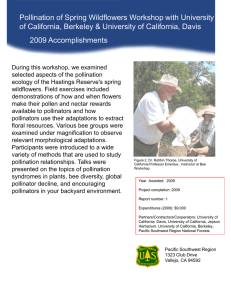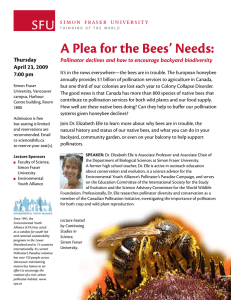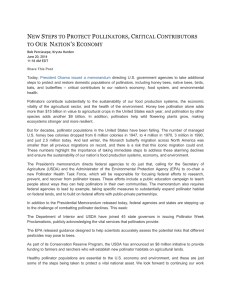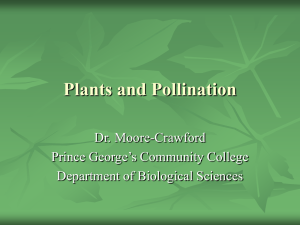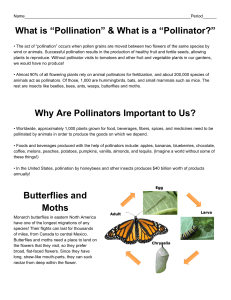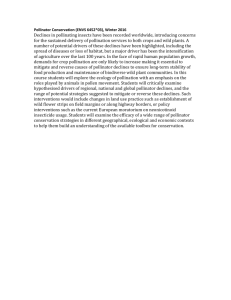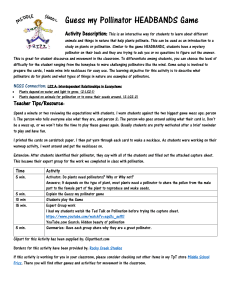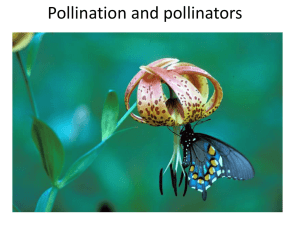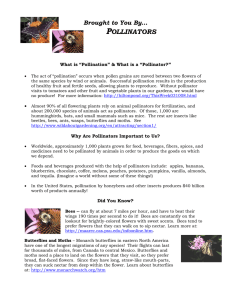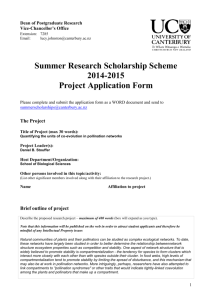The Plight of the Bee: in South Africa’s Semi-Deserts Connal Eardley
advertisement
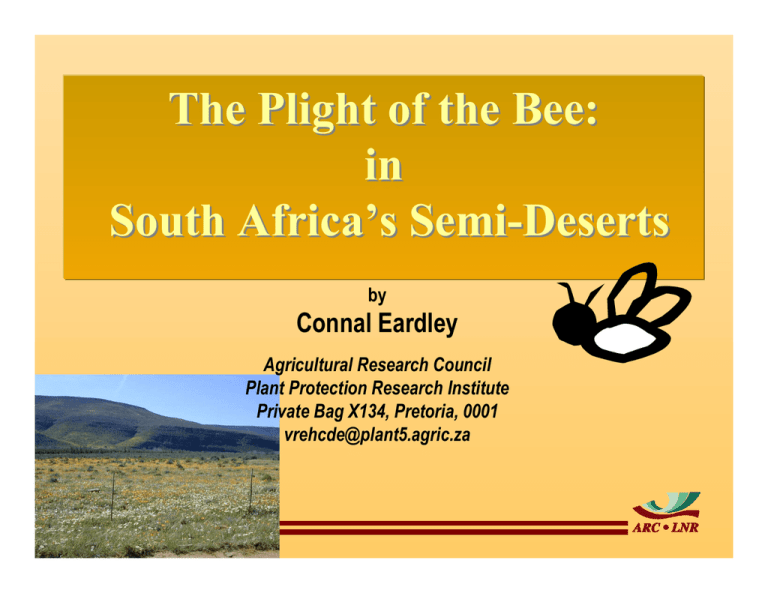
The Plight of the Bee: in South Africa’s Semi-Deserts by Connal Eardley Agricultural Research Council Plant Protection Research Institute Private Bag X134, Pretoria, 0001 vrehcde@plant5.agric.za South Africa Habitat 7 South African Biomes Habitat Land cover Habitat Threatene drare endemics Habitat The Pollination Process Savanna pastures are wind pollinated Karoo pasture is insect pollinated The Bees Oligolecty vs polylecty: Who pollinates what in the Cape? We do not know! •SA’s winter rain areas more diverse than summer rainfall areas. •Cape Mediterranean areas less diverse than other such areas. •Polylecty more common than oligolecty in the Cape. •Cape Floral Kingdom a unique Zoogeographical Region. •Cape bees undergone recent adaptive radiation, as in plants. •Land-use favours polylectic species •Current land-use threatens bee abundance and diversity. The Perils for Bees •Excessive stock. •Selective grazing and browsing. •Trampling by stock. •Removal of dry wood. •Water pollution by stock. •Impoundment of water. •Canalizing of water. •Insecticides. •Alien invasive species. •Bush cutting. •Replacement of natural vegetation by cultivated pastures. •Replacement of natural vegetation by crop plants. The African Pollinator Initiative The African network for the Convention on Biological Diversity’s International Pollination Initiative Participation by interested persons is encouraged Objectives of the International Pollinator Initiative •Monitor pollinator decline, its causes and impact on pollination •Address lack of taxonomic information on pollinators •Assess economic value of pollination and economic impact of decline in pollination services •Promote conservation, restoration and sustainable use of pollinator diversity •Encourage use of indigenous pollinators in agriculture The CBD’s thematic areas for Agrobiodiversity Assessment •Needs: monitoring, taxonomy & information. •Economic value of pollination. •Conservation status of pollinators. Adaptive Management •Create management models. •Investigate trade in pollinators. Capacity Building •Training. •Data repatriation. •Policy & networking.. Mainstreaming •Monitoring status and trends. •Branding and information Project Purpose •Monitor pollinators (diversity & relative abundance) to obtain base-line data •Develop databases on pollinators •Measure change in pollinator diversity and abundance •Identify causes of change •Develop models to predict change in biodiversity (diversity of other groups) •Identify conservation and restoration strategies We Need, for the API in Africa: • Team effort • Regional approach • Standardized methodologies • Case studies • Pilot projects • Policy Urgent Conclusions Land-use management must consider: • Essential ecosystem services. • Unique symbiotic relationships. Land rehabilitated must consider the complex of organisms associated with rare/threatened species. Basic scientific information is needed to: • Document change in biodiversity . • To develop adaptive management practices To benefit we must contribute The End Acknowledgement: The Symposium Organizers CTA ARC-PPRI Sarah & Fred Gess
